The heartleaf philodendron is a beautiful plant with heart shaped green leaves and a vine like structure. This plant is very popular and is a staple in most plant lovers homes.
If you don’t have a lot of light in your home, this is the perfect plant for you! The heartleaf can survive just fine in lower light levels. This plant will also thrive in bright indirect light.
I would recommend this plant to new plant parents or busy people. As It is a hardy plant that is relatively simple to grow and fairly indestructible. Definitely a great option for a beginner plant parent.
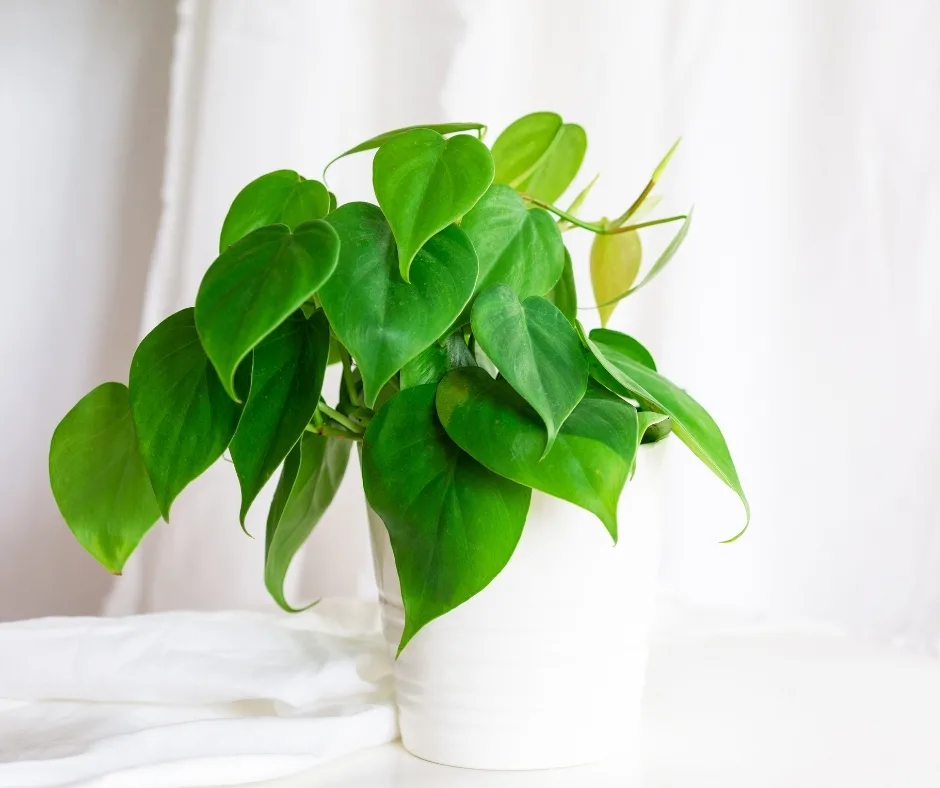
This plant is not very expensive and is pretty simple to find in local nurseries or greenhouses. You can also purchase the heartleaf philodendron online. One of our favorite online spots to buy plants is from Etsy, many hobby plant owners open small shops to sell cuttings and plants.
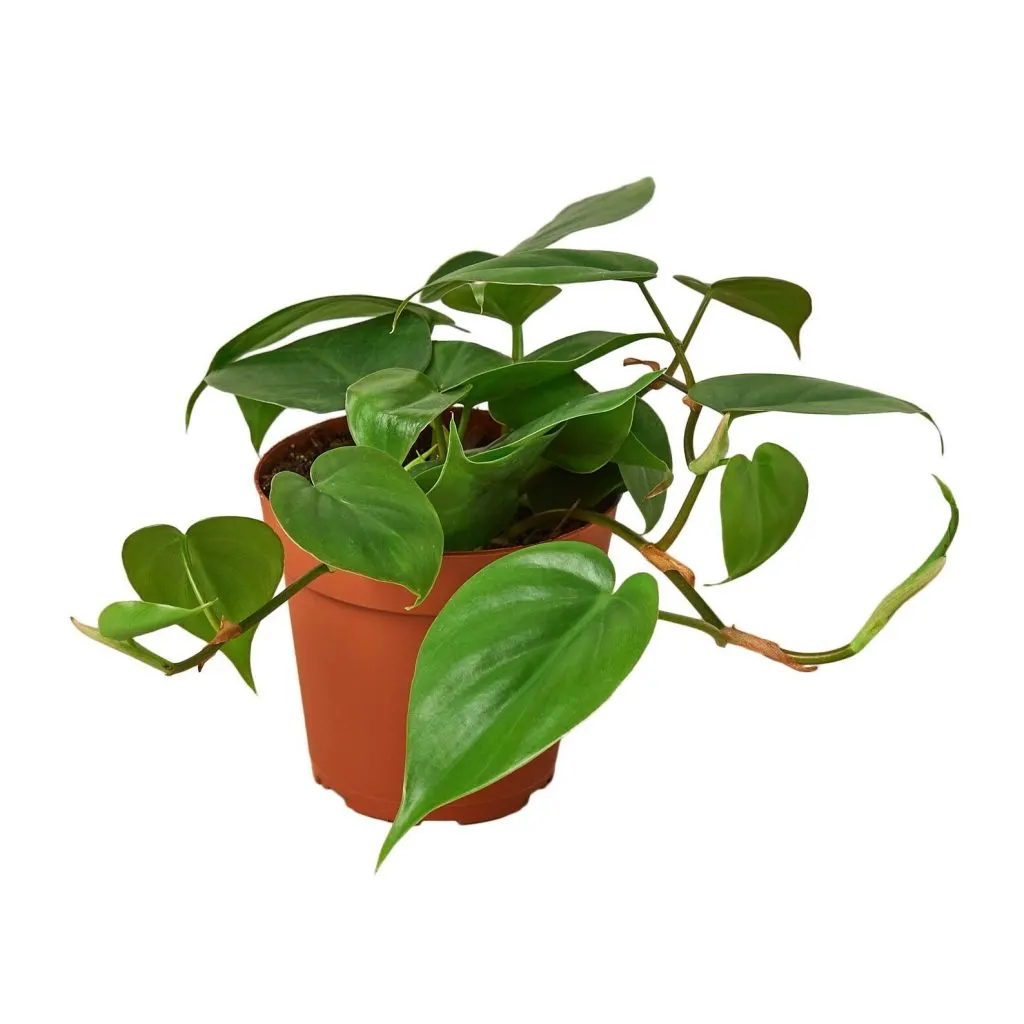
Purchase the Heartleaf Philodendron on Etsy
Photo Credit: IndoorPlantsLLC from Etsy
The heartleaf philodendron looks very similar to a Pothos plant. The main difference between a pothos and a philodendron vine is the way that the leaf comes out of the plant. The philodendron grows with a sheath around the leaf known as a Cataphyll. The pothos plant will grow leaves from the previous leaf. I always look for a Cataphyll sheath when I’m trying to identify a philodendron vine.
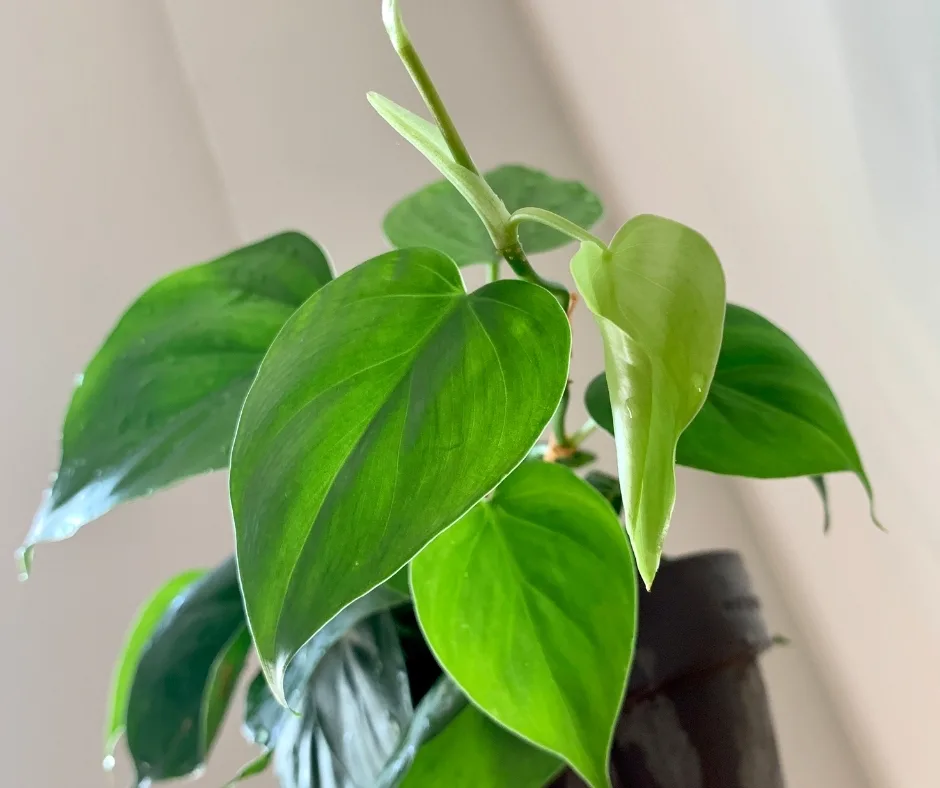
Yellowing leaves on the heartleaf philodendron most commonly comes from overwatering. This plant like all houseplants is susceptible to root rot.
More Philodendron Plants:
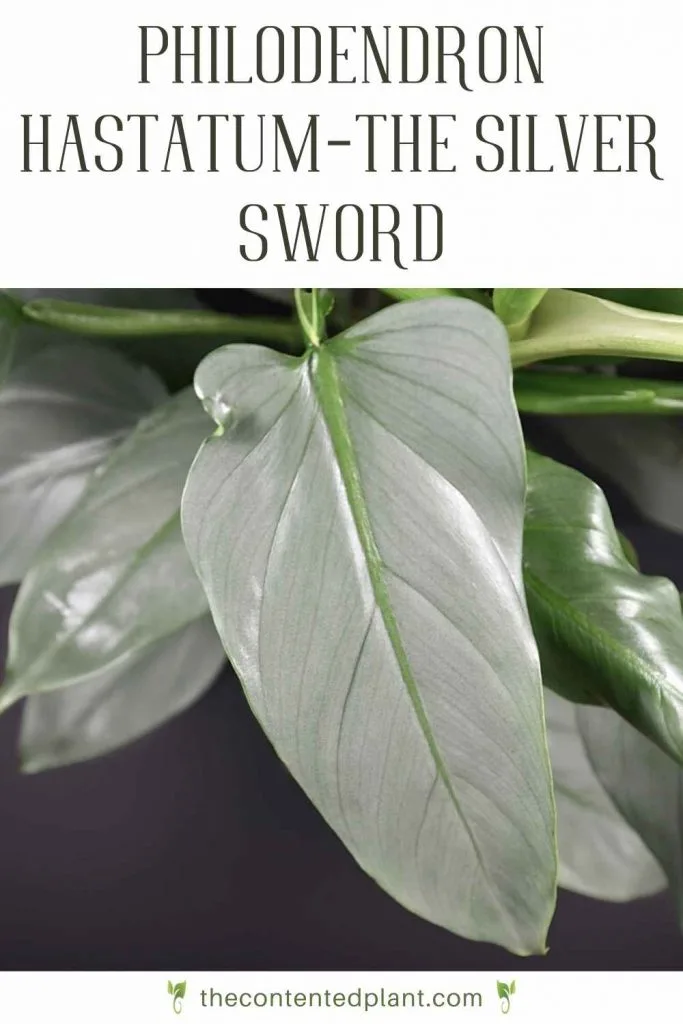
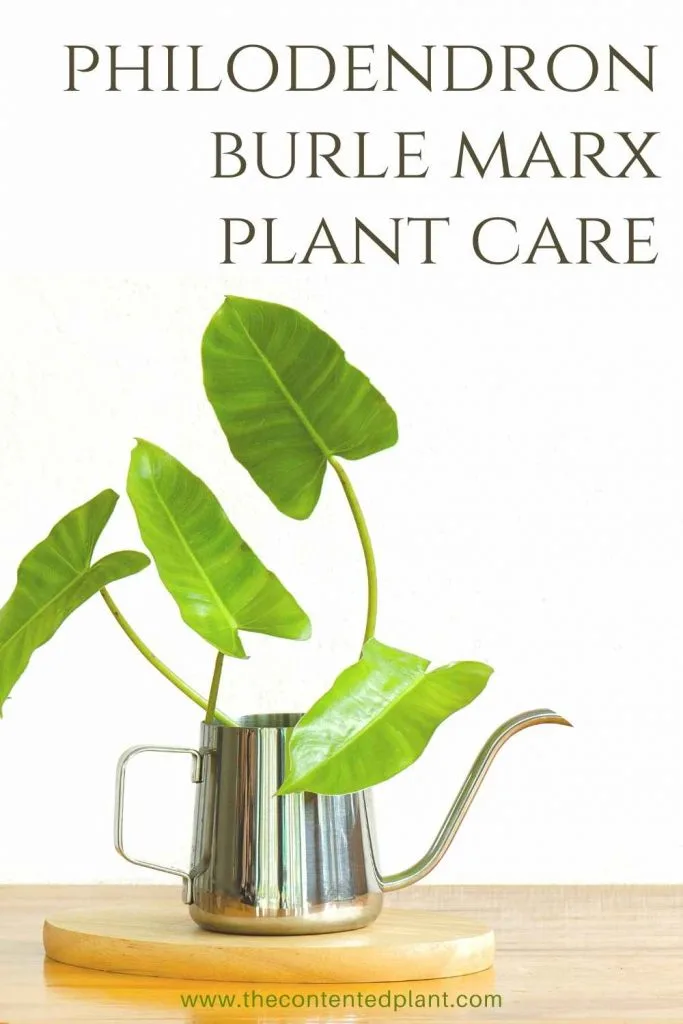
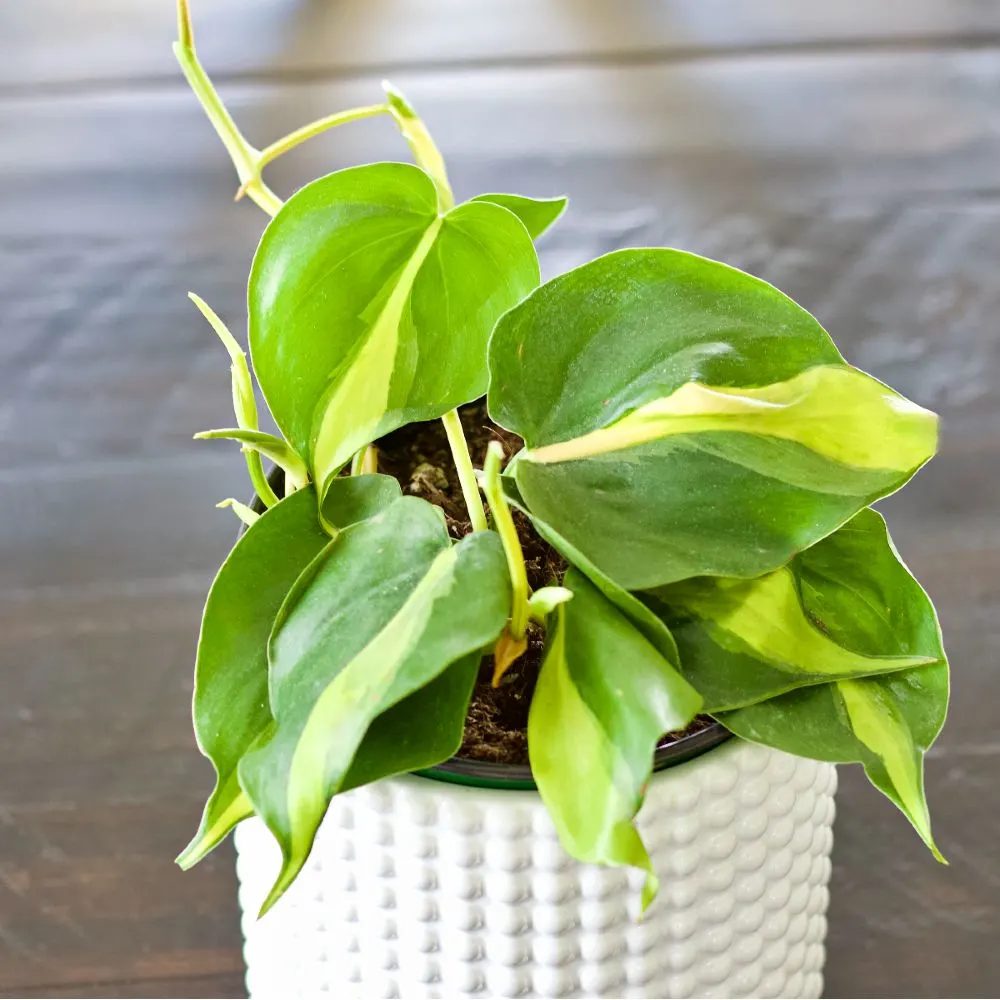
We have put together an easy to read printable care guide detailing all the care needs for this plant.
Heartleaf Philodendron Care Guide
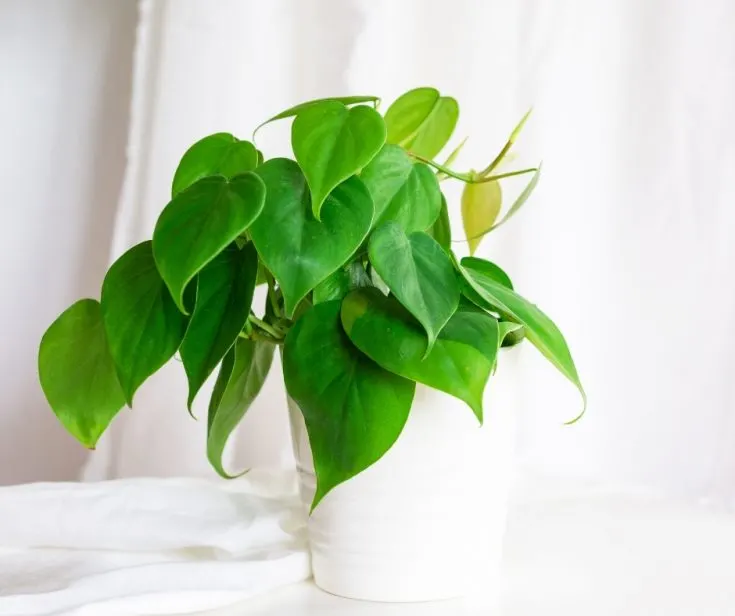
The Heartleaf Philodendron is a stylish plant with heartshaped green leaves.
This Lovely plant grows as a vine and does well in a hanging basket, or trained on a trellis or pole.
This Care Guide will teach you how to keep this tropical Aroid happy all through the year.
Materials
Instructions
Soil Preference:
- This aroid requires a light soil.
- A mix of potting soil, perlite and orchid bark will keep the roots happiest.
- Here is our mix.
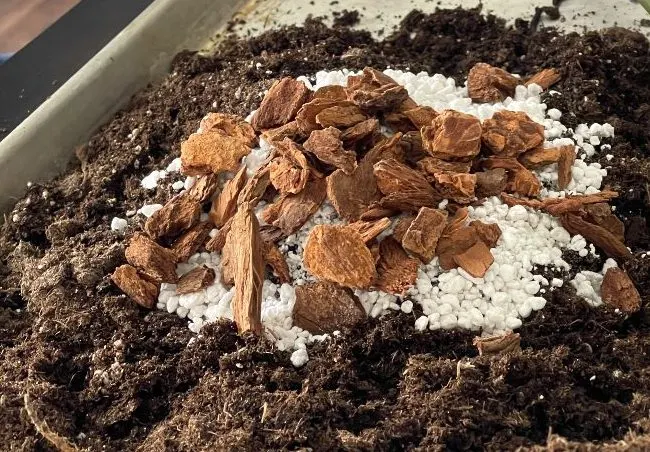
- Two parts potting soil to two parts perlite to one part orchid bark.
- A heavy soil potting mix is not recommended for aroids.
Pot Size and Type:
- The Heartleaf Philodendron grows relatively quickly and does best when allowed to trail or climb.
- If you want to encourage faster growth choose a pot about 2 inches wider in diameter than the current pot.
- Any well drained pot can be used. It MUST have drainage.
- Repot every second year or when roots come out the drainage holes on the pot bottom To the next pot size up.
- Don't jump to a huge pot from a small one unless you wish to encourage faster growth. Just go to the next size up pot.
Lighting:
- The Philodendron Heartleaf enjoys bright indirect or dappled light.
It will tolerate lower indirect light if it has some brighter moments in the day. - Some filtered sunlight from a window will be appreciated.
- Shield this aroid from strong direct light in summer south and west sunny windows. The leaves will burn.
- Tip: Window sheers or blinds can offset some brief periods of high direct light.
Watering:
- Water your plant when the soil is dry. Aroids do not like to be overly wet. Try a watering schedule of every other week.
- Watering is best done on a regular schedule so the plant is not over or under watered. Both can cause stress on the plant.
- This tropical plant enjoys humidity. In dry climates this Philodendron will thrive with a humidifier nearby. OR use a pebble tray under the pot filled half way with water.
- In dormant winter months reduce watering to when the soil is dry.
- Never let this plant get wet feet. Water when the top 2 inches of soil are dry. If the soil is compacted the bottom of the soil can remain wet which encourages root rot and fungus gnats.
How to Fertilize:
- Apply a good quality fertilizer (linked in materials) monthly through Spring and summer.
- Decrease feedings by late Fall and allow the philodendron to rest through the winter months.
Temperature:
- Keep the plant at a low of 65 Degrees F. to upward of 85 Degrees F. It enjoys warmth and humidity.
Pruning and Training:
- Pruning will give you a fuller plant with more even growth. But it's not necessary with the heartleaf unless you want to shape it.
- Sharp Hand pruners are preferred for pruning. They will give a clean cut that will heal quickly.
Table Top Plants:
- It’s easy to prune and shape these plants to whatever length and fullness you desire.
- Since the heartleaf is a trailing plant, it will need to be hung up in a hanging pot when the leaves start vining down the side of the pot.
- If you don't want to hang the Heartleaf Philodendron, another option would be to stake it so it can climb.
Pests:
- This plant is not fussy and resists pests. However all plants can get attacked by pests.
- Stress by longterm overwatering, poor light, extreme temperatures and soil conditions are contributors to plant stress..
- Spider mites, mealy bugs, scale, thrips and whitefly are the most common houseplant pests you will see.
- Read our post on How to get rid of aphids and other pests with our homemade pesticide soap recipe or neems oil.
- To minimize the possibility of pests be sure to check all nursery plants before bringing them home.
- Quarantine all new plants until you are sure no pests live in them.
How to Propagate:
- Propagation is easily done through leaf node stem cuttings.
- You need a 3 to 6 inch leaf stem with a couple of nodes and healthy growth.
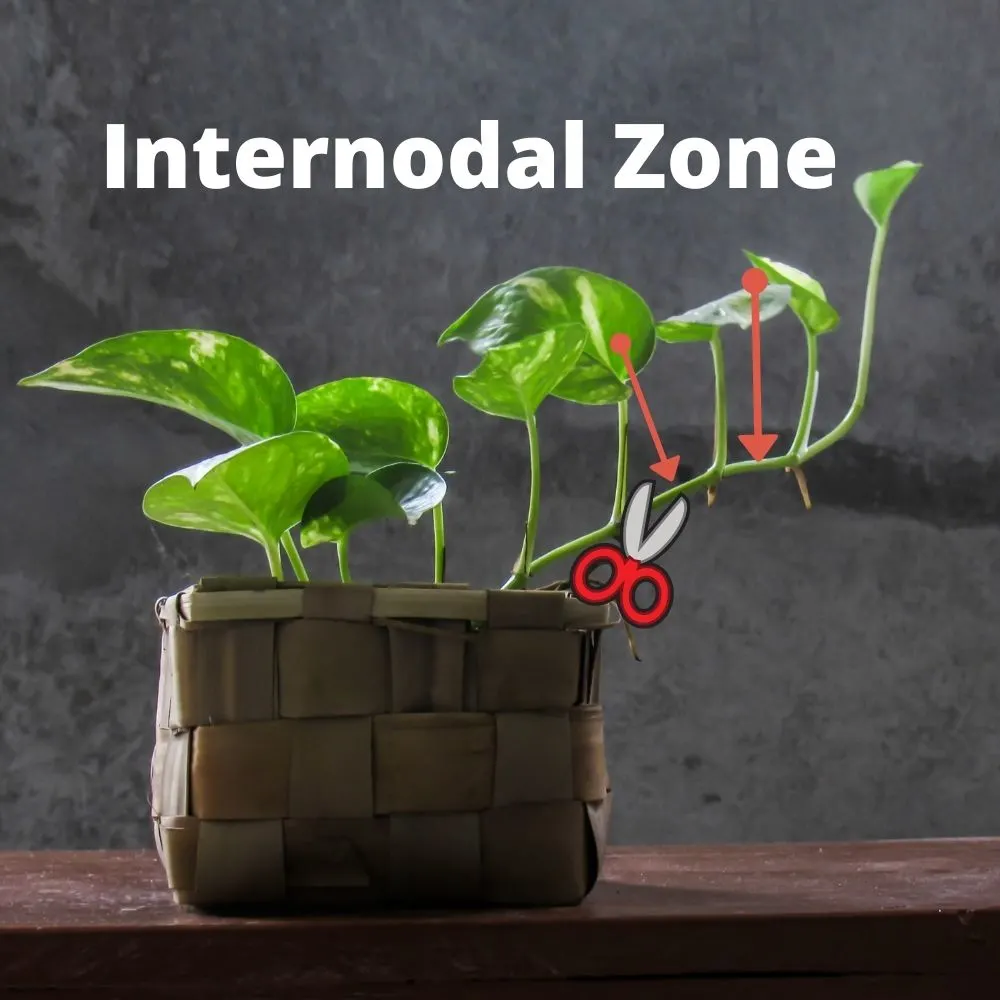 The nodes are easy to spot on a vine plant.
The nodes are easy to spot on a vine plant.- Cut a long stem from the mother plant as close to the base of the plant as possible.
- Place the node into a jar with water. Use tap water that has settled 24 hours in the jar to dissipate chemicals harmful to the philodendron.
- Set the jar in a well lit area.
- After several weeks roots will grow. Allow the roots to get an inch or more in length.
- Plant gently and firmly into pot with proper soil mix.
- Make sure to keep the soil moist until the roots begin to set into the soil.
Notes
Toxic Plant:
While not fatal, eating these mildly poisonous houseplants causes irritated skin, nausea, burning and swelling of the mouth, tongue or throat, vomiting and diarrhea in pets and people.
Keep them in a safe place.
Follow Us:
Find us on YouTube, Instagram , Pinterest and TikTok! We love to Plant chat. We also comment, like and occasionally share your content to our daily stories. We’d love to see your plants. Share your joy in your houseplants. Happy Planting!
You can read more about the plant genus Philodendron’s.
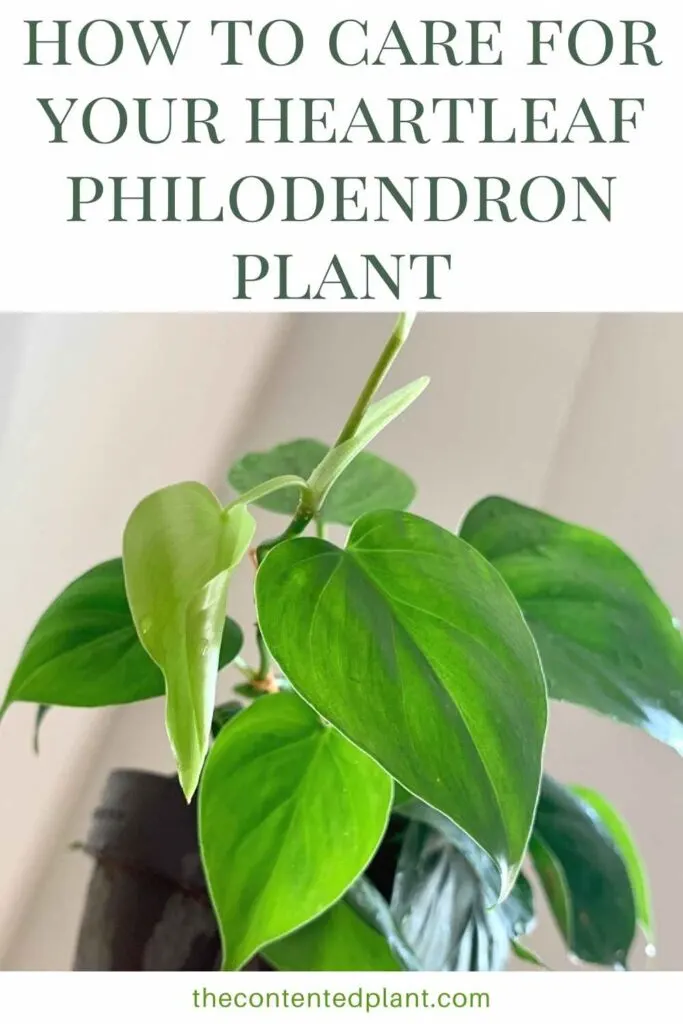


Growing in Leca Balls-Pros and Cons - The Contented Plant
Tuesday 21st of June 2022
[…] all houseplants can grow successfully in LECA. Orchids, Monstera, Philodendron, Alocasias, and pothos are a few good choices for […]
Watering Plants Properly - The Contented Plant
Saturday 5th of February 2022
[…] the Pothos Vines, Philodendrons, and many other durable houseplants we suggest for beginner plant parents adjust themselves to most […]
Leca For Plants- Which Plants Thrive in LECA? - The Contented Plant
Thursday 9th of September 2021
[…] All Philodendrons like the HeartLeaf Philodendrons […]